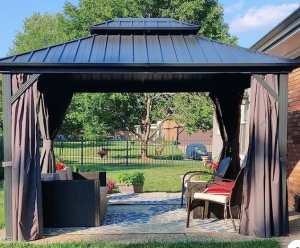What Are ADUs and How Do They Work?

Accessory Dwelling Units (ADUs) have gained significant attention in recent years as a practical solution to address housing shortages and provide flexible living options. They are secondary residential units that can be built on the same lot as a primary residence. ADUs come in various forms, such as backyard cottages, basement apartments, or garage conversions. In this article, we will explore what ADUs are, how they work, and their potential benefits for homeowners and communities. Click here for more about My ADU and shop your Pinterest inspirations.
Table of Contents
Understanding ADUs
ADUs, also known as granny flats, in-law suites, or secondary suites, are self-contained living spaces that provide an additional housing unit on a property. These units are designed to be secondary to the main dwelling and typically have their own entrance, kitchen, bathroom, and sleeping quarters. ADUs can be attached to the primary residence, located above a garage, or built as a separate structure on the property.
Types of ADUs
There are three main types of ADUs:
- Detached ADUs – These units are entirely separate structures from the primary residence. They can be located in the backyard or side yard of the property and often resemble small cottages or tiny homes.
- Attached ADUs – Attached ADUs are connected to the primary residence, sharing one or more walls. They can be built as an addition to the existing structure or by converting existing space, such as a basement or attic, into a separate living unit.
- Junior ADUs – Junior ADUs, also known as “JADUs,” are smaller in size compared to traditional ADUs. They are typically created by converting a portion of an existing bedroom or living space within the primary residence. JADUs have their own entrance but may share bathroom facilities with the primary dwelling.
Benefits of ADUs
ADUs offer several advantages for homeowners and communities:
- Increased housing options – ADUs provide additional housing units on existing properties, effectively increasing the housing supply without changing the neighborhood’s character. They can accommodate extended family members and aging parents or be rented out to generate additional income.
- Affordability – ADUs can offer a more affordable housing option for renters and homeowners. Renting out an ADU can provide a steady income stream for homeowners, and the lower cost of living in a smaller unit can be more accessible for tenants.
- Aging in place – ADUs allow older adults to age in place by providing a separate and accessible living space while still being close to their family or support network. This can promote multigenerational living and foster stronger family bonds.
- Sustainable living – ADUs promote sustainable living by utilizing existing infrastructure, reducing the need for new construction and sprawl. They also encourage transit-oriented development and can contribute to reduced vehicle dependence.
Regulations and Zoning
The regulations and zoning requirements for ADUs vary by location. Some cities and municipalities have embraced ADUs as a means to address housing shortages and have implemented relaxed regulations to encourage their construction. However, other areas may have stricter rules governing their size, setbacks, parking requirements, and occupancy restrictions.
Homeowners interested in building an ADU should consult their local planning department or building permit office to understand the specific regulations in their area. It’s important to ensure compliance with zoning codes and obtain any necessary permits before proceeding with construction.
The Process of Building an ADU
Building an ADU generally involves the following steps:
- Research and design – Begin by researching local regulations and design options for ADUs. Determine the type of ADU that best suits your property and needs. You may want to consult with an architect or contractor to create a design that maximizes space and complies with regulations.
- Financing – Explore financing options for ADU construction, such as personal savings, home equity loans, or construction loans. Some areas have programs or incentives that offer financial assistance or streamline the financing process.
- Obtain permits – Before starting construction, obtain the necessary permits and approvals from the local building department. Submit your plans and pay any required fees. It’s important to comply with all regulations and building codes to ensure a smooth construction process.
- Construction – Once permits are obtained, hire a licensed contractor or undertake the construction yourself if you have the necessary skills. Ensure proper coordination with utility companies for connections and comply with building codes and safety standards throughout the construction process.
- Inspection and occupancy – After construction is complete, schedule inspections with the building department to ensure compliance with all regulations. Once the ADU passes inspections, it can be occupied by tenants or used for its intended purpose.
ADUs offer a flexible housing solution that addresses housing shortages, provides additional income opportunities, and promotes sustainable living. Whether you’re considering building an ADU for your own use or to accommodate others, understanding the types, benefits, and the construction process is essential. By adhering to local regulations and taking necessary steps, homeowners can create valuable living spaces that enhance their property and contribute positively to their communities.





